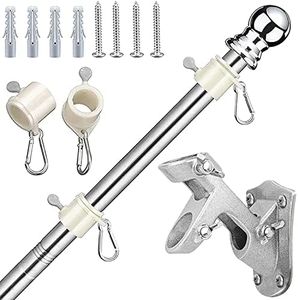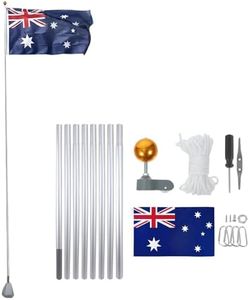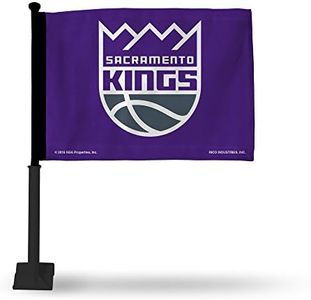We Use CookiesWe use cookies to enhance the security, performance,
functionality and for analytical and promotional activities. By continuing to browse this site you
are agreeing to our privacy policy
4 Best Tailgating Flag Poles
From leading brands and best sellers available on the web.Buying Guide for the Best Tailgating Flag Poles
Choosing the right tailgating flag pole can really enhance your game-day experience or any outdoor event. A good flag pole helps you display your team spirit, makes it easy for friends to find your spot, and can even add a bit of fun decor to your setup. When picking one, think about where and how you’ll use it, what kind of flags you want to display, and how much convenience matters to you – things like setup, takedown, and portability. Understanding each feature will help you narrow your choices to the best fit for your routine.HeightThis refers to how tall the flag pole gets when fully extended. The height is important because it determines how visible your flag will be from a distance – the higher, the more likely friends can spot your location. Flag poles usually range from short models around 6-10 feet, good for small cars or spaces, to very tall ones up to 25+ feet for maximum visibility. For regular tailgates, 15-20 feet is popular. Choose based on how much attention you want, and how much space you have to set up. If you're in a crowded area or space is tight, go shorter; if you want to stand out on a big field, go taller.
MaterialFlag poles are typically made from materials like aluminum, fiberglass, or steel. This matters because the material affects how heavy, durable, and weather-resistant your pole will be. Aluminum is lightweight and doesn't rust, making it easy to transport and durable in most weather. Fiberglass is light and flexible, handling wind well. Steel is strong but tends to be heavier and could rust if not treated properly. If you'll be moving your pole often, go for lightweight materials. If you want it to withstand rough weather, pick something sturdy and rustproof.
Mounting BaseThis is how the pole attaches to the ground or your vehicle. Common types are tire mounts (that slide under your car tire), ground stakes, or tripod stands. The base is important because it determines how stable the pole will be and where you can use it. Tire mounts are great for most tailgates since they use your vehicle for stability. Ground stakes work on grass or dirt fields, but not on pavement. Tripods work anywhere, but may be a bit bulkier. Consider where you'll usually be tailgating – a parking lot, grassy field, or concrete – and pick a base that fits those conditions.
Portability and StorageThis is about how easily the pole breaks down for transport and how much space it takes up when not in use. Portability is important if you don’t want to carry heavy or awkward gear. Telescoping poles, which collapse down to a shorter length, are great for saving space and quick setup. Sectional poles come apart into pieces, but can be a bit more work to assemble. If you travel frequently or pack your car full, lighter and more compact options are ideal.
Flag AttachmentsThese are the hooks or clips that actually hold your flag. Some poles hold just one flag, while others can display several at once. Look for sturdy, rustproof attachments that make it easy to add or swap flags. If you like changing up your display or flying multiple flags, check how many attachment points the pole offers and if they fit standard flag grommets. Pick the one that matches how often and how many flags you want to fly.
Wind ResistanceThis describes how well the flag pole stands up to breezy or windy conditions without bending or falling over. It’s important for safety and to avoid damage to your gear. Some poles are flexible to bend with the wind, while others are rigid and may tip in strong gusts. Heavier bases and quality materials help with wind resistance. If you usually tailgate in windy areas or on open fields, look for poles designed for wind, or ones where you can add weight to the base.





